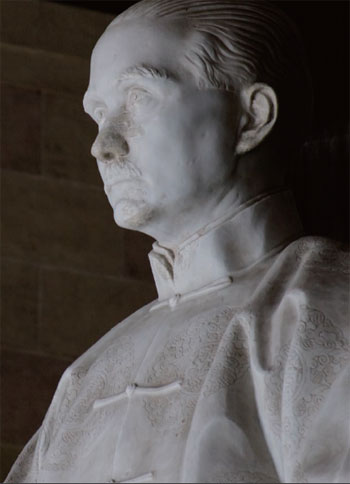Life on the Water's Edge: The Culture and History of the Qinhuai River
The Founding Father of Modern China
Perhaps no other statesman in recent history has affected the direction of modern politics, education and leadership in China than Sun Zhongshan (Sun Yat-sen as pronounced according to Cantonese dialect). Born in Guangdong Province and educated abroad, Sun Yet-sen was a doctor, a writer, a revolutionary and then finally a politician. The final step was the first president of the Republic of China putting an end to thousands of years of imperial rule and laying the foundations for a modern China.
The name Zhongshan can be found on buildings, streets and parks all over China as a testament to his legacy. However, on January 1st, 1912, Nanjing was where his newly formed government re-established the capital of China. The presidential palace where Sun Zhongshan served out his presidency was built over the remains of a residence of a former Ming leader. The life of Sun Zhongshan has left an indelible mark on the city of Nanjing.
Zhongshan's passing away in 1925 would not only set in motion changes to the political landscape but also to the physical landscape of Nanjing. He passed away in Beijing and rested there until his mausoleum could be completed and he returned to his final resting place on June 1st, 1929. The site was actually chosen by Zhongshan when he commented to friends while vacationing in the area that he wished to be laid to rest on this site.
The national park encompasses an area of 80,000 square meters overtaking a large hillside of the Purple Mountain. The park itself is beautiful and lush filled with maple, gingko and pine trees and emotes both traditional Chinese and modern design sensibilities. The mausoleum itself sits atop the hill overlooking the park.
To ascend the 392 steps to reach the chamber where Zhongshan's tomb lies is no easy task but the long climb up is well rewarded with a spectacular view.
When inside the mausoleum a large marble sculpture of a seated Zhongshan (Yatsen) surrounded by inscriptions of the constitution of the Republic promoting his ideals of nationalism, democracy and the people's livelihood can be seen. By stepping further inside and through a small door you enter the rotunda where his sarcophagus lies and another marble sculpture of the leader lying in peace resides.
A hush fills the room as you walk around looking down to see one of China's greatest leaders.
On of the darkest events in human history was perpetrated in Nanjing in 1937. The invading Japanese army descended on the city and began a six-week-long massacre that involved not only murder but also included torture and brutal rape with nearly 300,000 victims. The Nanjing Massacre Memorial and museum offer a sobering and informative view of the atrocities that are still fresh in the minds of many people.
The memorial itself is a large walled complex and courtyard that when you enter immediately separates you from the outside world. The sparse collection of bronze and stone sculptures is haunting in their bleakness and painful expressions. What is more painful as a visitor is how barren and helpless you feel once inside the wall, a feeling surely intended when designed.
The museum itself offers a tremendous amount of information on the time leading up to the Japanese invasion and the media tampering that was enacted. Artifacts from clothing and weaponry to newspaper clippings and other ephemera are presented thoroughly. The facts and stories are presented in a way that does not cry out for sympathy as one would expect but try to desperately retain the dignity of those lives ruined.
As you descend deeper into the museum the realities of what happened are shown in a tasteful yet no less heart-wrenching manner. Two mass gravesites are available to view as further proof of the horrors that were committed here. The experience of visiting this museum is a difficult yet a very necessary part of a journey to Nanjing.
 0
0 










Go to Forum >>0 Comments